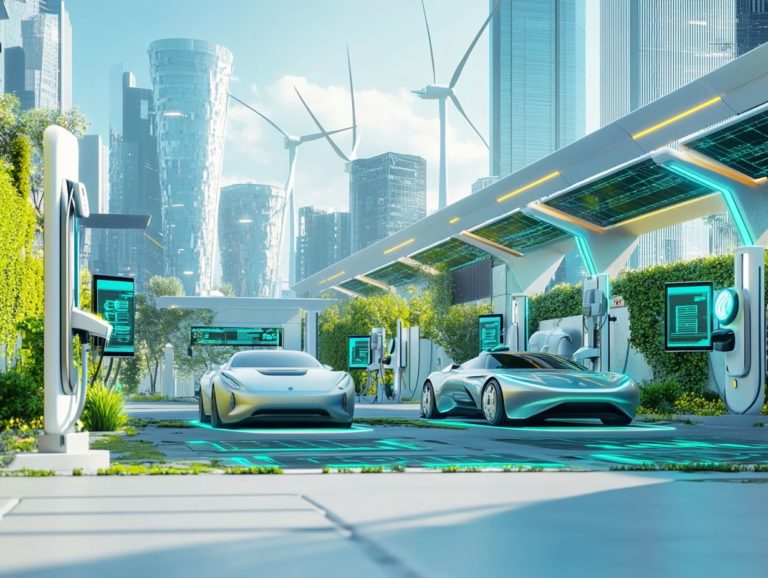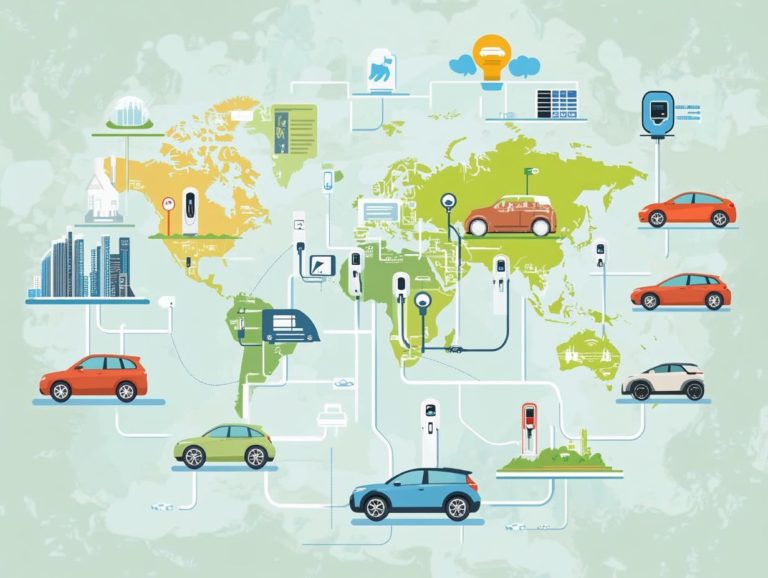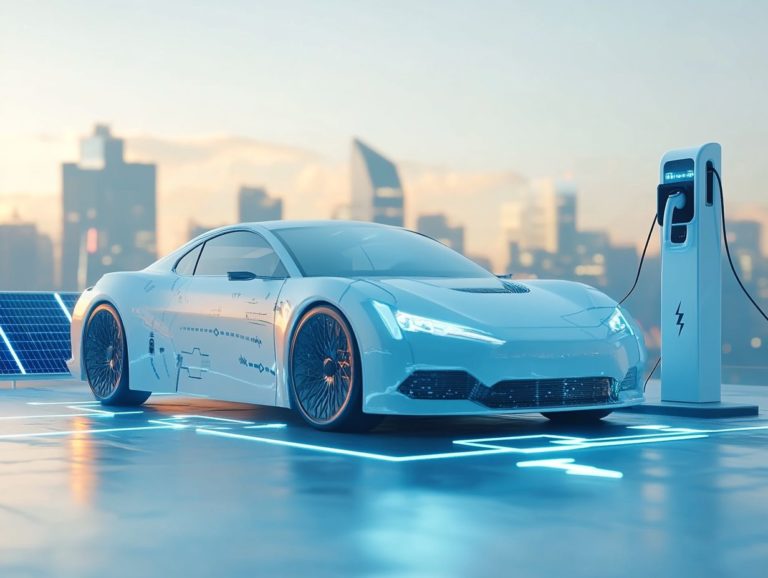the role of government in ev charging expansion
As electric vehicles (EVs) gain momentum in the pursuit of a sustainable future, the expansion of EV charging infrastructure becomes essential for consideration.
This article explores the myriad benefits of such expansion, ranging from significant environmental advantages to stimulating economic growth.
You ll discover an assessment of the current state of charging infrastructure and existing challenges that need addressing.
We will also examine how government investment and policies are pivotal in overcoming the barriers to adoption.
Join us to explore success stories, future projections, and potential roadblocks in this transformative journey toward a greener tomorrow.
Contents
- Key Takeaways:
- The Importance of EV Charging Expansion
- Current State of EV Charging Infrastructure
- Role of Government in EV Charging Expansion
- Impact of Government Support on EV Adoption
- Future Outlook for EV Charging Expansion
- Frequently Asked Questions
- How is the government supercharging EV charging expansion?
- How does government funding contribute to EV charging expansion?
- What regulations does the government need to implement for EV charging expansion?
- How does the government promote the adoption of electric vehicles?
- What are some challenges the government faces in EV charging expansion?
- How can citizens and businesses support the government’s efforts in EV charging expansion?
Key Takeaways:
- Government support is crucial in expanding EV charging infrastructure.
- Investment and incentive programs play a key role in driving EV adoption.
- Successful government initiatives address existing challenges in the EV charging market.
- Future EV charging expansion looks promising, but infrastructure limitations and lack of funding must be addressed.
The Importance of EV Charging Expansion
The expansion of electric vehicle (EV) charging infrastructure is vital for both environmental sustainability and economic growth.
This initiative, part of the Biden administration’s Bipartisan Infrastructure Law, seeks to enhance the charging network across the United States.
As consumer demand for electric vehicles continues to rise, it is imperative to invest in charging stations and fast chargers that facilitate EV adoption and align with climate objectives, such as reducing transportation emissions and achieving zero emissions by 2050.
Benefits for Environment and Economy
The expansion of EV charging infrastructure presents remarkable advantages for both the environment and the economy.
As you transition to electric vehicles, the reduction in transportation emissions becomes strikingly apparent, leading to improved air quality and a decrease in greenhouse gas emissions.
The rising demand for EVs calls for substantial investments in new charging stations and renewable energy sources. This sparks economic growth through job creation in the sustainable energy sector.
This movement encourages innovation and fortifies local economies, laying a strong foundation for a green economy that supports the planet while enriching communities.
Current State of EV Charging Infrastructure
The current landscape of EV charging infrastructure in the United States presents a blend of opportunities and challenges.
While there is an expanding network of charging stations, notable gaps in coverage and accessibility still exist, particularly in rural areas.
Existing Challenges and Limitations
Despite the rapid expansion of the EV charging network, several challenges hinder its effectiveness.
Insufficient infrastructure investment and the pressing need for public funding to tackle issues in the charging market are significant roadblocks.
These issues are magnified by the uneven distribution of charging stations, creating accessibility problems in rural and underserved areas.
Many potential EV owners are anxious about charging availability, which could slow the shift toward greener vehicles.
Existing charging strategies often fall short on the speed and reliability expected, further compounding the problem.
As electric vehicles gain traction, it s crucial to address these pressing issues to cultivate a robust and efficient charging ecosystem that meets the needs of an expanding market.
Role of Government in EV Charging Expansion
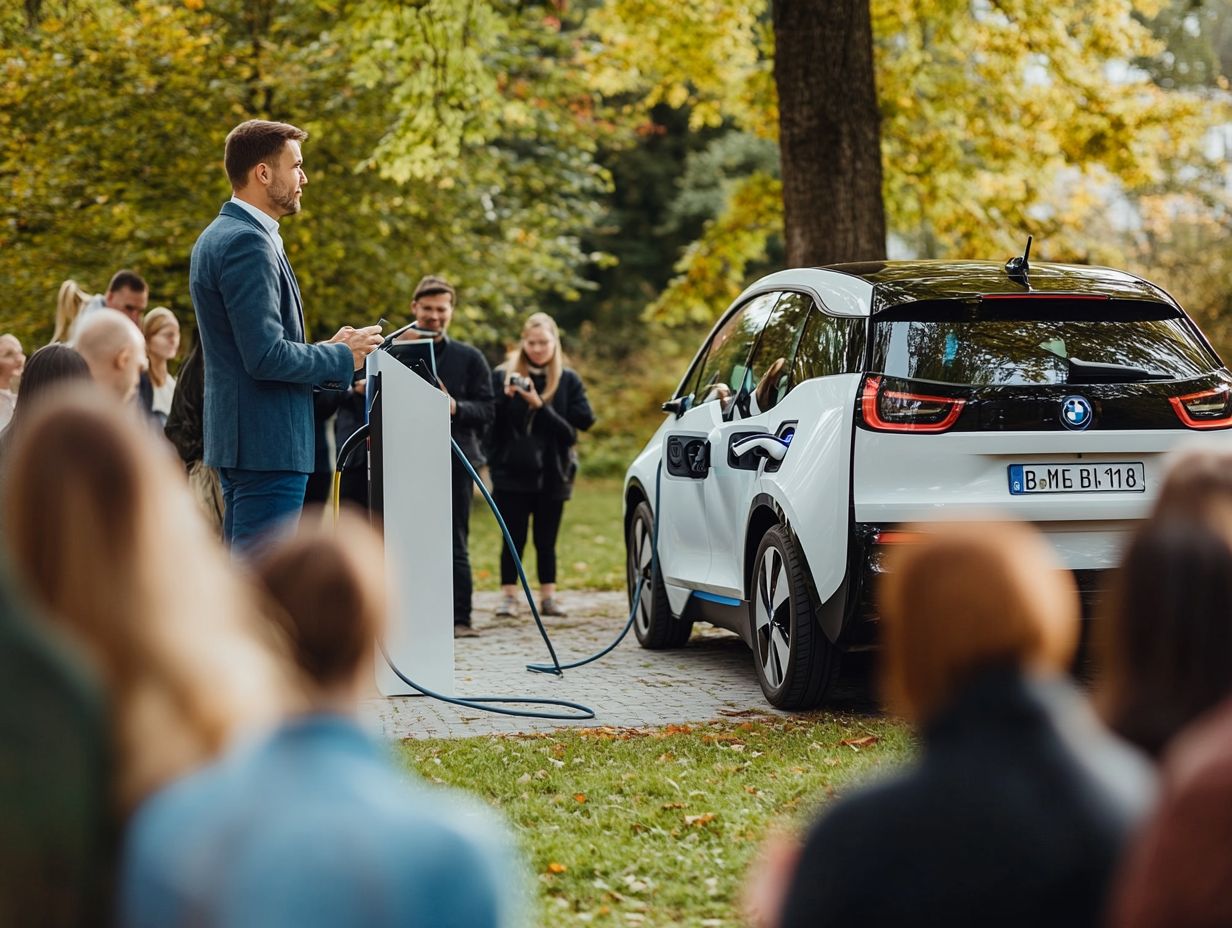
The government’s role in expanding EV charging infrastructure is crucial.
Initiatives from the Biden administration pave the way for significant investment incentives and establish regulatory standards that actively promote the adoption of electric vehicles.
By leveraging these efforts, you can help drive the transition toward a more sustainable future.
Investment and Incentive Programs
Investment and incentive programs are crucial to enhancing electric vehicle (EV) charging infrastructure. The Bipartisan Infrastructure Law allocates funding for expanding the charging network for electric vehicles.
These programs do more than just increase the number of charging stations; they also promote the adoption of electric vehicles among consumers and businesses.
Various federal and state funding mechanisms, including grants and tax incentives, stimulate public and private investment in deploying charging stations. These financial initiatives provide resources to reduce installation costs, improve accessibility, and support equitable infrastructure growth in underserved communities.
Strategic partnerships between government agencies and private companies are vital. They align efforts to meet the ambitious goals outlined by the law, ensuring that the transition to electric mobility is both seamless and sustainable.
Regulations and Policies
Regulations and policies shape the future of EV charging expansion. They ensure that public charging facilities adhere to established standards while fostering infrastructure development.
These frameworks simplify the approval processes for new charging stations, offering essential guidelines for safety and accessibility.
Government initiatives often provide incentives for businesses and local governments to invest in charging networks. This effectively encourages the broader adoption of electric vehicles.
Energy policies influence electricity pricing at charging stations, making certain locations more appealing for both operators and consumers.
As these regulations evolve, they enhance the availability of public charging and lay the groundwork for a more robust and integrated EV infrastructure that meets increasing demand.
Impact of Government Support on EV Adoption
Government support plays an important role in boosting EV adoption rates. By offering financial incentives and public funding, it enhances consumer satisfaction and ignites interest in electric vehicles.
This strategic backing makes owning an EV more appealing and fosters a broader commitment to sustainable transportation solutions.
Success Stories and Case Studies
Numerous success stories and case studies highlight the transformative impact of effective infrastructure investment and public charging initiatives, driving higher electric vehicle adoption rates across various states.
California, for example, has made bold investments in an extensive network of fast chargers. This significantly propelled electric vehicle sales, positioning it as a leader in EV adoption.
Similarly, Colorado s Charge Ahead Colorado initiative has provided grants to establish charging stations in rural areas, ensuring that less populated regions can access EV technology.
In Washington and Oregon, partnerships between local governments and utility companies have led to streamlined installation processes for public charging infrastructure. This boosts consumer confidence in electric vehicles.
These examples illustrate that robust charging solutions, combined with strategic funding and community engagement, can dramatically accelerate the transition towards sustainable transportation.
Future Outlook for EV Charging Expansion

The future of EV charging expansion looks exceptionally bright! Projections suggest a substantial increase in both the charging network and EV sales.
This growth is fueled by continuous infrastructure development and a clear shift toward clean transportation.
Predictions and Projections
Predictions for the EV market suggest a significant surge in electric vehicle sales as investments in infrastructure ramp up and clean energy initiatives gain momentum.
Market analysts envision a future where charging stations are not only more widespread but also easily accessible, instilling confidence in potential buyers who are ready to make the leap to electric vehicles.
This growing interest among consumers reflects a heightened awareness of environmental issues and an encouraging response to government policies and incentives designed to facilitate EV adoption.
Analysis indicates that this boom in electric vehicle sales will play an important role in meeting carbon neutrality targets, which are goals to reduce carbon emissions to zero. This underscores the necessity of continuous investment in renewable energy sources alongside the development of essential infrastructure.
Embracing a holistic approach is key to unlocking the full potential of the clean energy revolution.
Potential Roadblocks and Solutions
While the future of EV charging expansion looks promising, several potential roadblocks could slow down progress, particularly challenges related to charging infrastructure and the pressing need for increased public investment.
Regulatory hurdles can complicate the establishment of new charging stations, limiting the locations and types of installations permitted across various municipalities. Without a cohesive framework, standardizing charging technology becomes a daunting task, making it difficult to ensure seamless accessibility for all electric vehicle owners. Additionally, the disparity in available resources between urban and rural areas further complicates the situation.
To address these challenges, it s essential for stakeholders government agencies and private investors alike to develop robust incentives for building charging networks. With public investment paired with clear regulatory standards, a pivotal shift can occur, bridging these gaps and fostering a more equitable charging ecosystem for everyone.
Frequently Asked Questions
How is the government supercharging EV charging expansion?
The government plays a crucial role in expanding EV charging infrastructure by providing funding, setting regulations and standards, and promoting the adoption of electric vehicles, including the role of local governments in EV incentives.
How does government funding contribute to EV charging expansion?
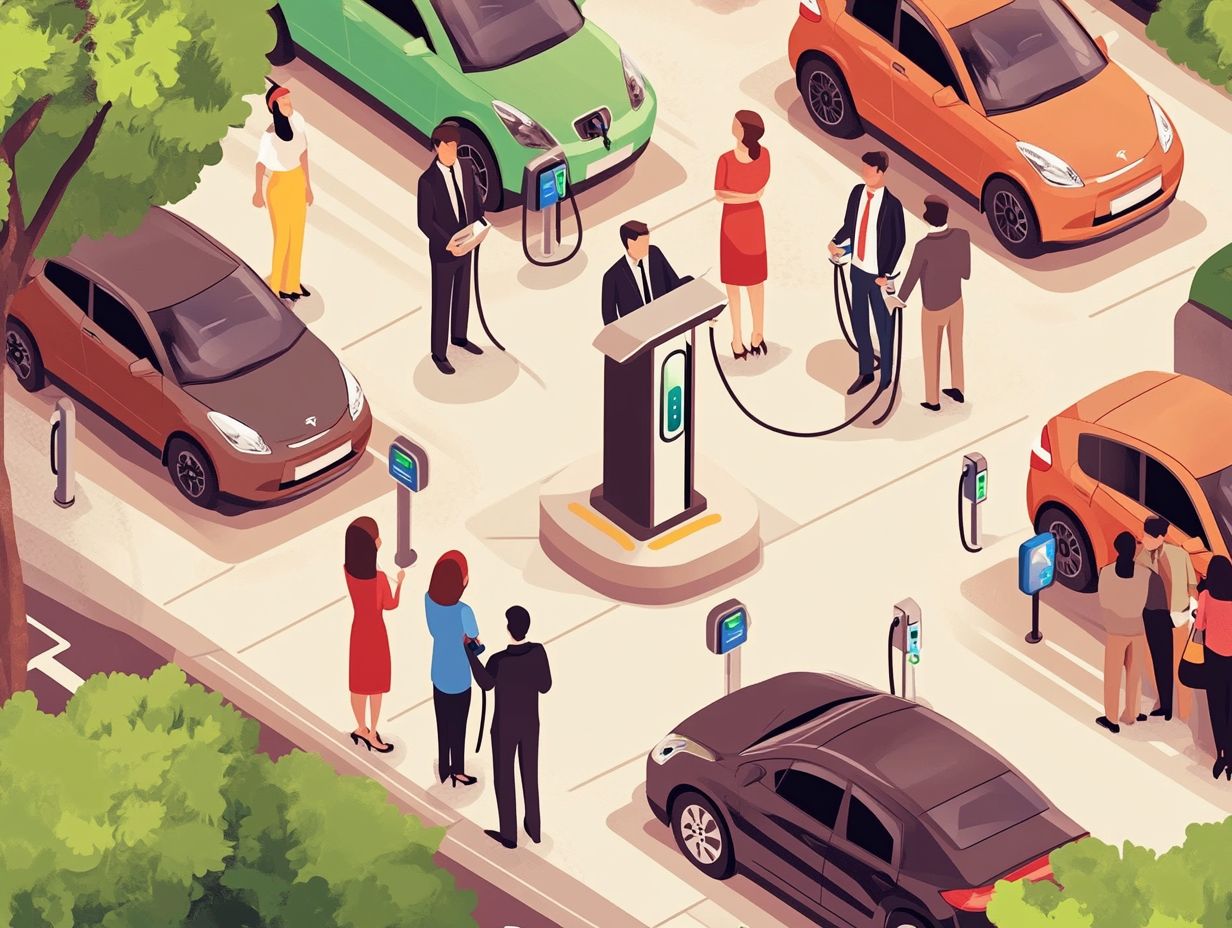
Government funding is essential for expanding EV charging infrastructure as it helps cover the high costs of installation and maintenance. It also encourages private companies to invest in charging stations.
What regulations does the government need to implement for EV charging expansion?
The government needs to set regulations for the installation and operation of EV charging stations to ensure safety, accessibility, and fair competition among charging providers. It also needs to establish standards for charging equipment and pricing.
How does the government promote the adoption of electric vehicles?
The government can promote the adoption of electric vehicles by offering incentives, such as tax credits or rebates, to EV owners. It can also implement policies like zero-emission vehicle mandates and low-emission zones to encourage people to switch to electric vehicles.
What are some challenges the government faces in EV charging expansion?
Some challenges the government faces include a lack of funding, outdated regulations, and limited public awareness and acceptance of electric vehicles. It also needs to address issues like equitable access to charging infrastructure and interoperability between different charging networks.
How can citizens and businesses support the government’s efforts in EV charging expansion?
Citizens and businesses can support these efforts by investing in electric vehicles, advocating for EV-friendly policies, and participating in public consultations on charging infrastructure development. They can also install charging stations on their properties and use renewable energy sources for charging.
Stay tuned for more updates on EV charging developments and how you can contribute!


